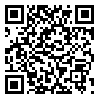BibTeX | RIS | EndNote | Medlars | ProCite | Reference Manager | RefWorks
Send citation to:
URL: http://ijn.iums.ac.ir/article-1-1313-en.html
This is a semi-experimental survey which has been performed in order to identify the effect of Fentanyle
administration through mouth mucus, on the vital signs and the time of the induction of anesthesia of patients who,
undergoing of elective surgery, are given general anesthesia in one of the hospitals affiliated to Iran Medic al
Sciences University.
In this survey • 80 patients, in two groups of 40 were studied, as case patients and controls, All patients were
within the range of 18-45 years old and possessed the necessary qualifications to take part in this study. About 20
minutes prior to the beginning of anesthesia, the case group was given a dose of 15 microgram per 1 kg weigh t
Fenranyle mixed with a little sugar through mouth mucus. The control group did not receive the medicine. They
were given only some sugar disolved in water. The case and control groups were chosen at random (that is one as
a case a one as a control sample). Then the patients in both groups were examined for the vital signs and the time
of induction of anesthesia.
The method of gathering data in this study, has been the direct observation of the researcher and recording the
vital signs and the time of the induction of anesthesia. The instrument used was a checklist.
The results of this study have been summarized in 36 tables and 36 diagrams and in the process of data
analysis, the descriptive and inferential method using the T and chi-square statistical tests, have been applied and
the results have been shown in the form of absolute and relative tables of the distribution of amplitude.
The results and findings of the study of the effect of mucous Pemonyte on vital signs and the time of the
induction of anesthesia showed that there is difference between case and control group in respect pulse,
respiration, systolic blood pressure and the time of the induction 0/ anesthesia in the patients. The t Statistical test
also showed a significant difference between the case group and the control group in this respect. But, administring
Fentanyle through mucus caused no change in the diastolic blood pressure of the patients and the T statistical test
also, did not show a meaningful difference in this respect between the case and control groups . Based on the
findings of this research, the researcher has discussed the usage a/this medicine in anesthesia and has proposed
some suggestions for further studies.
Received: 2012/10/2 | Accepted: 2018/07/30 | Published: 2018/07/30
| Rights and permissions | |
 |
This work is licensed under a Creative Commons Attribution-NonCommercial 4.0 International License. |




